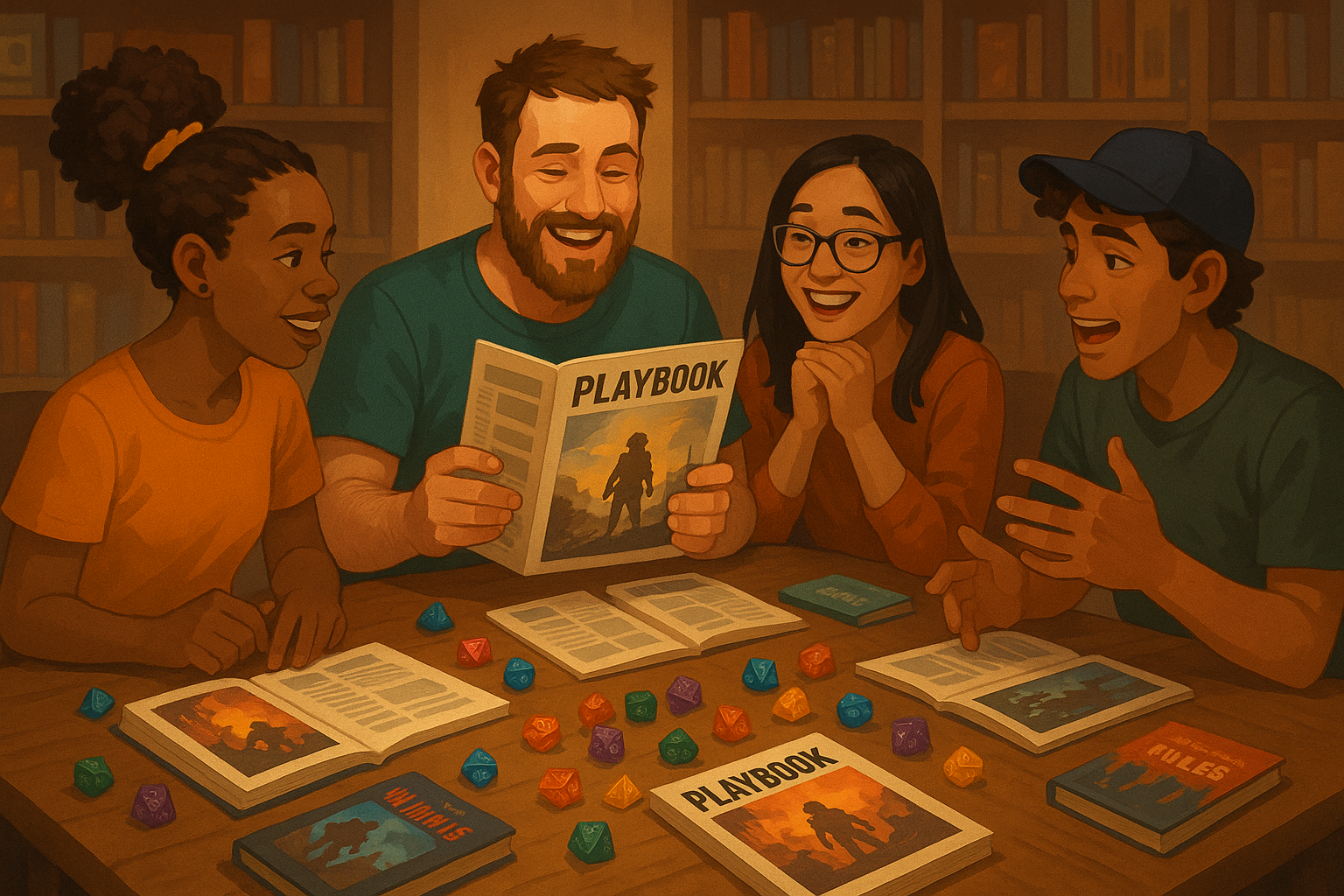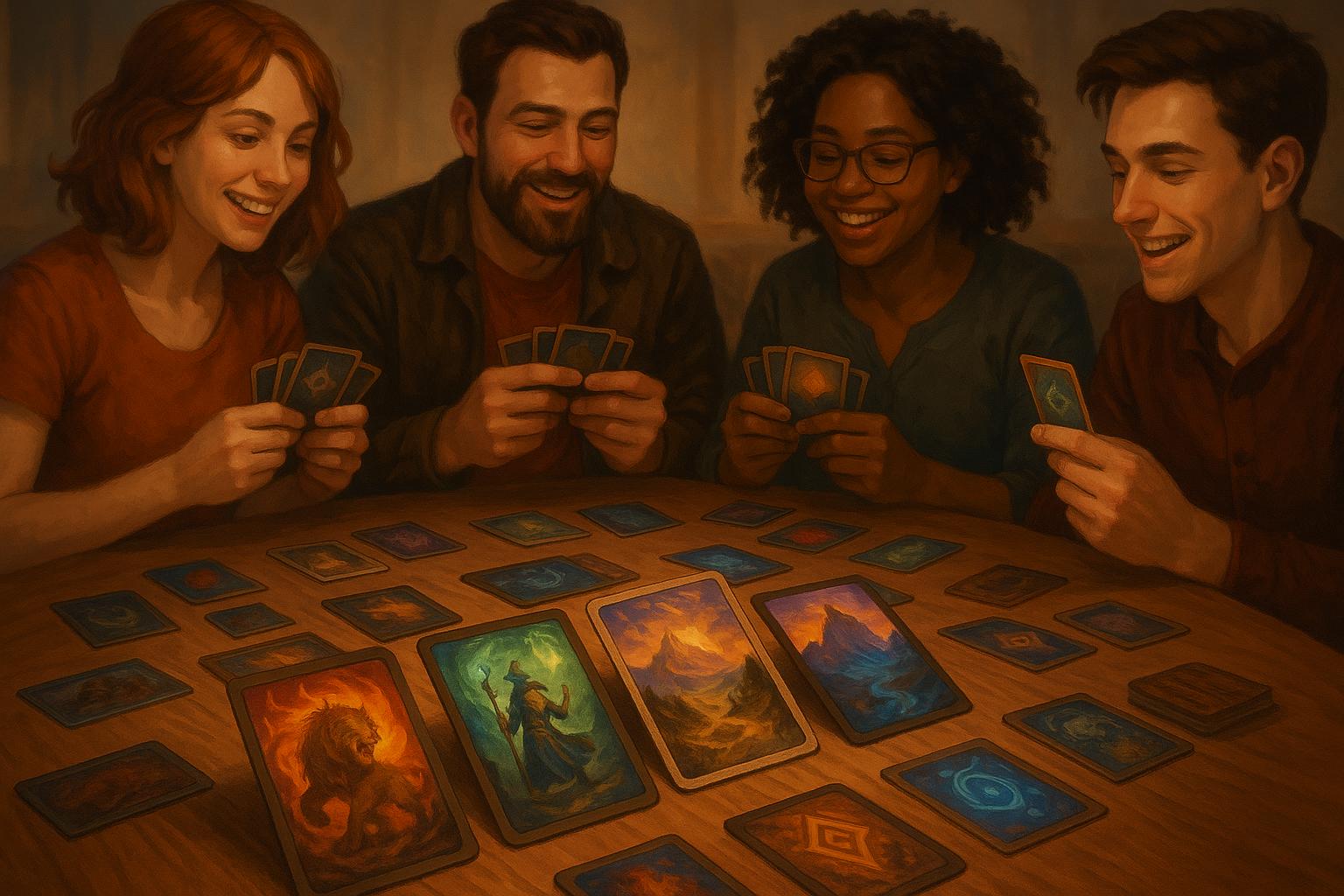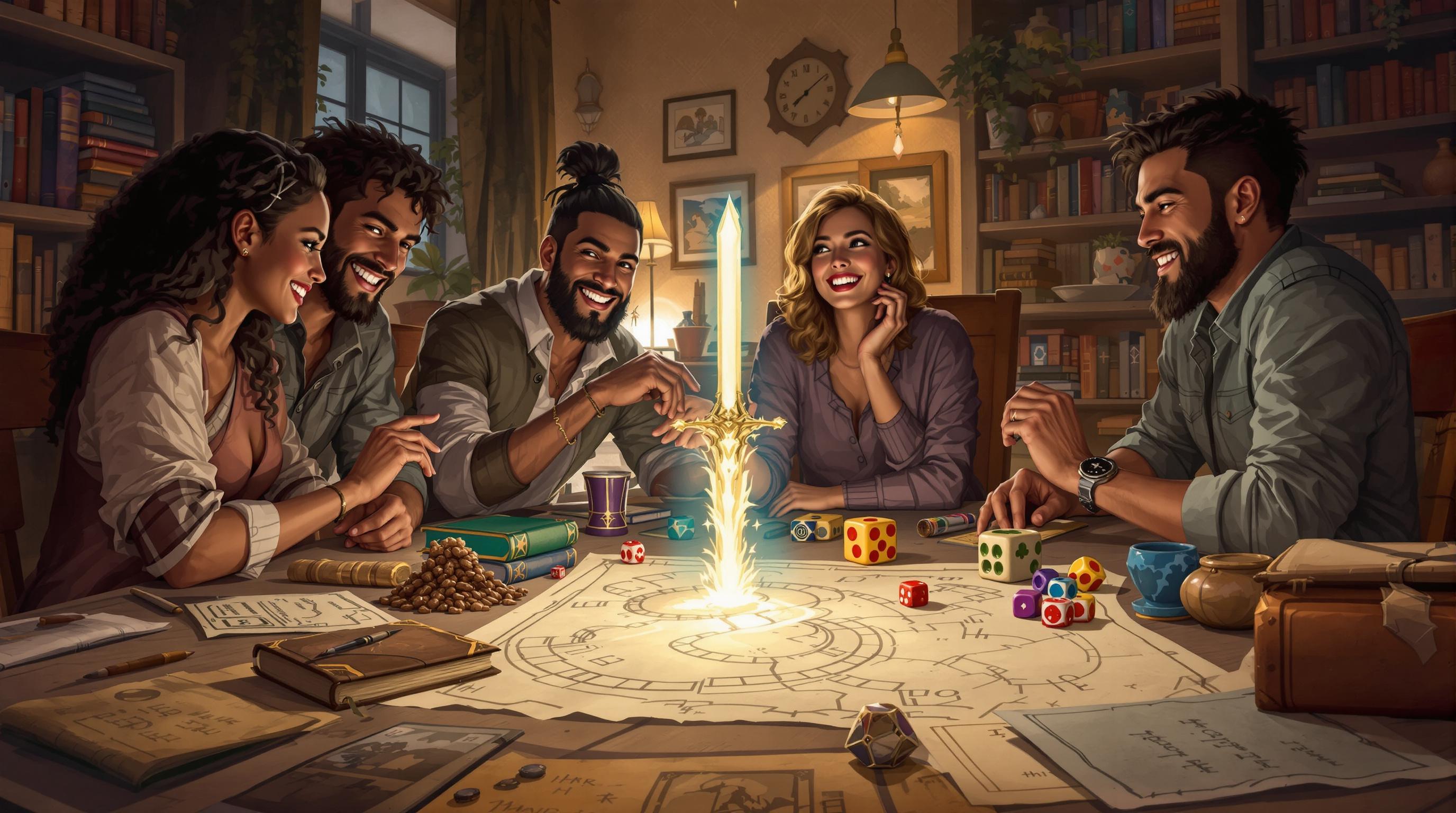Balancing roleplay and combat in tabletop RPGs (TTRPGs) ensures every player enjoys the game. Here's how:
- Know Your Players: Understand their preferences for combat or storytelling.
- Blend Roleplay and Combat: Encourage character-driven actions during battles and use combat to advance the story.
- Create Non-Combat Challenges: Design puzzles, social events, or moral dilemmas for deeper engagement.
- Manage Pacing: Alternate between roleplay and combat naturally to keep sessions dynamic.
- Reward Both Equally: Offer XP, items, or story progression for victories in both combat and roleplay.
Balancing these elements keeps sessions engaging and fun for all players. Let’s dive into how to make it happen!
10 Combat Narration Tips to Stop Boring Combat
Know Your Players' Preferences
To create engaging TTRPG sessions, it's crucial to understand what your players enjoy. Some players, like Tacticians, thrive on strategic combat, while others, such as Storytellers, are drawn to rich narratives and character development [1]. Knowing these preferences will help you design sessions that keep everyone involved and excited.
Collecting Player Feedback
Feedback is a great way to uncover what your players enjoy. The 'Stars and Wishes' method, for example, encourages players to share what they liked and what they'd like to see in future sessions. You can also use post-session surveys, private chats, or anonymous forms to gather honest input. This feedback provides valuable insights into your players' expectations and preferences.
Balancing Different Player Interests
Players often bring different expectations to the table, and balancing them can be a challenge. Pay attention to engagement levels during sessions to see what works and what doesn’t. For example, if some players love combat but others prefer roleplay, try blending these elements - introduce tactical decisions into roleplay scenarios or weave character development into combat encounters.
Watch for moments when players seem especially engaged or distracted. This real-time feedback can guide you in adjusting the balance between roleplay and combat, ensuring the session remains dynamic and enjoyable for everyone.
Incorporate Roleplay into Combat
Blending roleplay into combat can make encounters more exciting and memorable, appealing to players who enjoy both action and storytelling.
Encouraging Character Interaction in Combat
Instead of simply saying, "I attack", players should describe their actions with flair and detail. Tying combat decisions to their character's background adds depth and personality to the encounter. For example, a knight might loudly challenge an opponent to a duel, while a rogue might throw in some clever taunts to distract or outwit their enemies [1][2].
Using Combat to Advance the Story
Combat should do more than just pit players against enemies - it should push the story forward. Design battles that uncover new details or have meaningful effects on the narrative [1].
Consider these elements:
- How enemy actions or tactics reveal their group's motives.
- How the battle's location connects to significant story events.
- How the outcome of the fight impacts future plot twists.
- How enemy dialogue drops hints or provides critical information.
This approach integrates combat into the story, balancing action with narrative progression.
Using the Setting to Enhance Combat
The environment plays a huge role in shaping combat strategies and roleplay. Well-designed settings can encourage creative player actions and influence outcomes [2]. For instance, players might:
- Take advantage of terrain for strategic benefits.
- Defend or destroy important elements within the environment.
- Adapt to challenging conditions like slippery ice or dense fog.
The setting also sets the tone for the encounter. A showdown in a grand cathedral might feel vastly different from one in a gritty back-alley tavern. These differences can shape both tactical decisions and how characters emotionally react to the situation [2].
sbb-itb-b8b00a5
Create Meaningful Non-Combat Encounters
Combat keeps players focused on strategy, but non-combat scenarios open the door for emotional depth and rich storytelling. These moments can bring a campaign to life in ways battles never could.
Designing Engaging Roleplay Scenarios
Non-combat encounters work best when they reflect player interests and character abilities, encouraging interaction and creative problem-solving [1]. Here are a few ideas to get started:
- Political Intrigue: Players navigate tense negotiations between rival factions, balancing diplomacy and strategy.
- Mystery Investigations: Challenges involving clues, witness interviews, and piecing together evidence to solve a puzzle.
- Social Events: Festivals, royal gatherings, or bustling markets where characters can build alliances or uncover secrets.
- Moral Dilemmas: Scenarios that push characters to confront their values and make tough ethical choices.
Make sure these encounters have clear goals but offer multiple ways to succeed. This approach allows players to think outside the box and use their characters' unique strengths [2].
Rewarding Non-Combat Achievements
Non-combat victories deserve meaningful rewards. Here’s a breakdown of possible incentives:
| Reward Type | Examples |
|---|---|
| Story Development | Uncovering secrets, advancing the plot, or deepening NPC relationships. |
| Material Benefits | Gaining rare items or valuable information that can shift the campaign. |
| Character Growth | Earning new skills, reputation boosts, or other tools for development. |
| Experience Points | Gaining XP for solving puzzles or roleplay, keeping progression steady. |
For example, brokering a powerful alliance might yield more lasting rewards than a won battle. Similarly, solving an ancient riddle could reveal a key piece of the overarching narrative [1].
If you’re looking for inspiration, the TTRPG Games Directory is packed with resources for exploring games that balance combat and other challenges across a variety of genres and play styles.
Manage Pacing for Balance
Pacing ties roleplay and combat together, ensuring one doesn't overpower the other. A well-paced session keeps the story moving and players engaged.
Switching Between Combat and Roleplay
Smooth transitions between encounters often come from natural story beats. Here's how skilled game masters manage these shifts:
| Transition Type | How to Use It | Why It Works |
|---|---|---|
| Post-Combat Reflection | Highlight the aftermath of a battle for character growth | Promotes reflection and planning |
| Rising Action | Build tension through roleplay before combat | Adds depth and context to encounters |
| Narrative Interrupts | Insert brief storytelling moments in long combat | Keeps the story connected to the action |
For example, during a fight, pause briefly to reveal a plot twist - like an enemy's hidden connection to the party [2].
Adjusting Pacing Based on Feedback
Pay attention to player engagement. If combat feels repetitive or players seem distracted, spice things up with a dramatic reveal or a quick roleplay scene. On the flip side, if roleplay stretches too long, throw in an unexpected combat challenge to re-energize the group [3].
Stay open to changes. If players are deeply immersed in roleplay, don't force combat just because it's in your notes. Similarly, if combat drags without adding to the story, wrap it up and shift back to character interaction [2].
"The ultimate goal is for everyone at the table to have fun." [1]
Tools like D&D's Inspiration or Pathfinder's Hero Points can keep things moving by rewarding players who engage fully in both combat and roleplay [3]. By carefully managing pacing, you create sessions where both action and storytelling feel rewarding for everyone involved.
Reward Both Roleplay and Combat Equally
Balancing rewards for combat and roleplay keeps players motivated and ensures everyone feels their contributions matter.
Examples of Reward Systems
A good reward system caters to different playstyles while maintaining game balance. Here's a breakdown of how rewards can be structured:
| Contribution Type | Reward Type | Impact |
|---|---|---|
| Combat Success | Experience points, treasure | Character growth, better gear |
| Creative Solutions | Story advantages, influence | Stronger NPC ties, plot progression |
| Character Moments | Inspiration points | Gameplay perks, narrative control |
For example, persuading a hill giant to release a captive could earn the same XP as defeating it in combat. This reinforces the idea that all valid solutions, whether through roleplay or battle, are equally important [1].
"Clever roleplay that advances the quest deserves XP, just like combat victories." [2]
Encouraging Long-Term Progression
A well-designed progression system keeps players invested by rewarding both combat and roleplay milestones. Unique rewards, like unlocking new storylines or gaining special abilities tied to memorable moments, can add depth [3].
You might also introduce personal character goals, such as:
- A short-term goal that's easy to achieve.
- A mid-term goal that's a bit more challenging.
- A long-term goal that stretches beyond the campaign's end.
Rewards should feel rare and meaningful to maintain their value. By recognizing both combat and roleplay achievements, you can ensure every player feels appreciated. This approach not only keeps the game engaging but also helps sessions run smoothly, fostering a stronger connection among players.
Conclusion: Finding the Right Balance for Your Group
Striking the right mix of roleplay and combat means staying open to change and listening to your players [1]. If you’re looking for inspiration, the TTRPG Games Directory showcases systems that successfully combine storytelling with combat elements.
This balance often comes through trial and error. A well-rounded game creates engaging sessions by offering both strategic and narrative moments while ensuring players feel in control [3]. Try incorporating character-focused moments into combat or creating non-combat challenges that carry real consequences.


